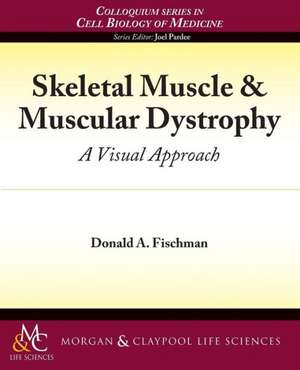Skeletal Muscle & Muscular Dystrophy: Colloquium Series on the Cell Biology of Medicine
Autor Donald Fischmanen Limba Engleză Paperback – 31 dec 2008
Preț: 194.60 lei
Preț vechi: 204.83 lei
-5% Nou
Puncte Express: 292
Preț estimativ în valută:
37.24€ • 38.47$ • 30.99£
37.24€ • 38.47$ • 30.99£
Carte tipărită la comandă
Livrare economică 26 martie-09 aprilie
Preluare comenzi: 021 569.72.76
Specificații
ISBN-13: 9781615040032
ISBN-10: 161504003X
Pagini: 56
Dimensiuni: 191 x 235 x 4 mm
Greutate: 0.13 kg
Ediția:New.
Editura: Morgan & Claypool
Seria Colloquium Series on the Cell Biology of Medicine
ISBN-10: 161504003X
Pagini: 56
Dimensiuni: 191 x 235 x 4 mm
Greutate: 0.13 kg
Ediția:New.
Editura: Morgan & Claypool
Seria Colloquium Series on the Cell Biology of Medicine
Notă biografică
Weill Cornell Medical College











